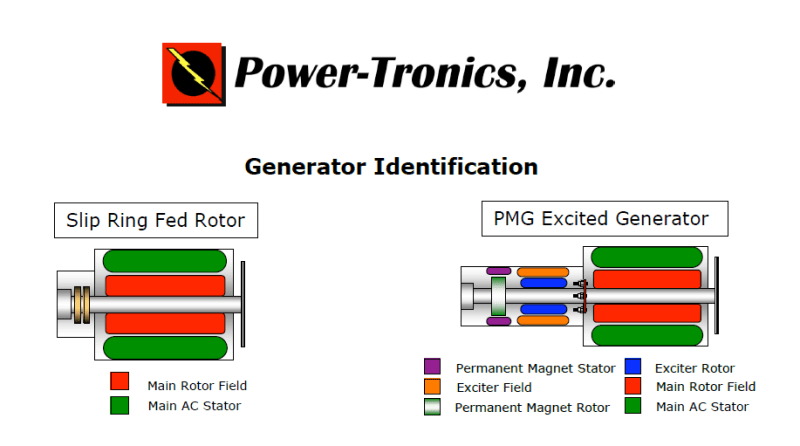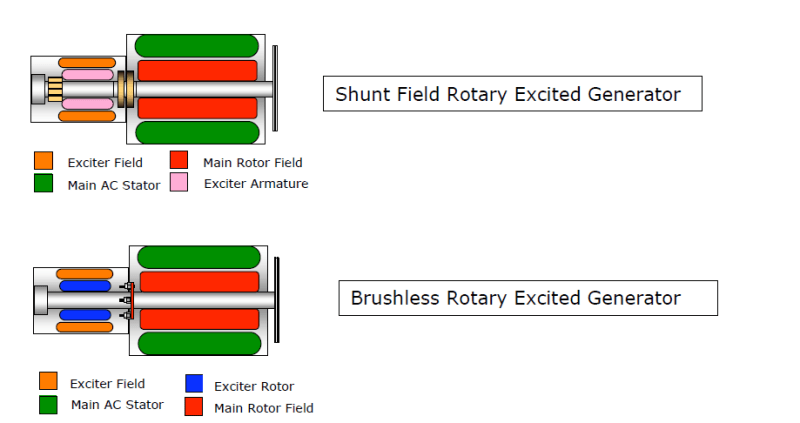Some old exciter type sets were converted to brushless and ran with the same AVR.
The toughest part of the conversion may have been cutting a key-way or groove in the shaft, past the back end bearing so that three wires could be passed from the exciter towards the field.
In some generator designs the bearing was outboard of the exciter and the conversion was easier.
An aluminum plate would be fastened to rotate with the shaft and the three phase bridge diodes would be mounted on the plate.
From a theoretical perspective, three phase power could be tapped from three commutator segments space at 120 degrees.
In practice that would be at the wrong end of the armature.
The commutator would be removed.
The armature could be rewound with a similar winding with no taps for commutator segments but three 120 degree taps at the opposite end of the armature.
A PMG set takes a special AVR, however in the event of the failure of either the PMG or the PMG AVR, a generic AVR, powered from one or two phases may be used until spare parts arrive. You will lose the PMG advantages until the PMG system is restored.
Single phase and three phase AVRs:
This may apply to the AVR power or the AVR sensing.
Generators have fairly wide phase voltage drops with uneven phase loading.
Most AVRs use single phase sensing.
Phase to neutral sensing may be used for three phase, but phase to phase sensing is better for unbalanced loads.
Some AVRs use three phase sensing but it is often pointless. The AVR cannot correct voltage differences due to unequal loading.
Phase to phase sensing works the best when combined with local knowledge and judgement as to which to phases to pick the sense voltage from depending on which phases are likely to experience the greatest loading.
The bottom line a generic AVR using single phase power and sensing phase to phase will get most smaller, stand alone gen sets operating acceptably. We had a lineup of 5 diesel gen-sets, a mix of 600 KW and 350 KW. They were paralleled as needed.
All ran well with generic AVRs with an added quadrature circuit. If an AVR lacks a quadrature circuit for sharing VARs in parallel operation, you can roll your own with one suitably sized resistor.
You can cut the quadrature resistor out of a failed AVR and use it with a generic AVR.
The only important thing is the field resistance as TugBoatEng mentioned.
Most generic AVRs will control most generators but you should check the AVR rating against the generator field resistance.
That is the resistance of the brushless exciter field, not the main generator field.
(Smaller: Up to around 1 MegaWatt or two MegaWatts.)
Bill
--------------------
Ohm's law
Not just a good idea;
It's the LAW!



